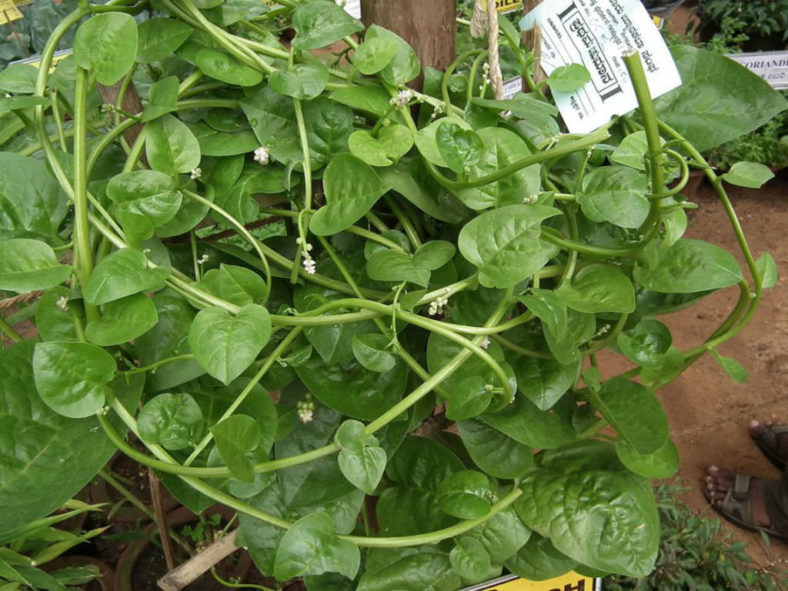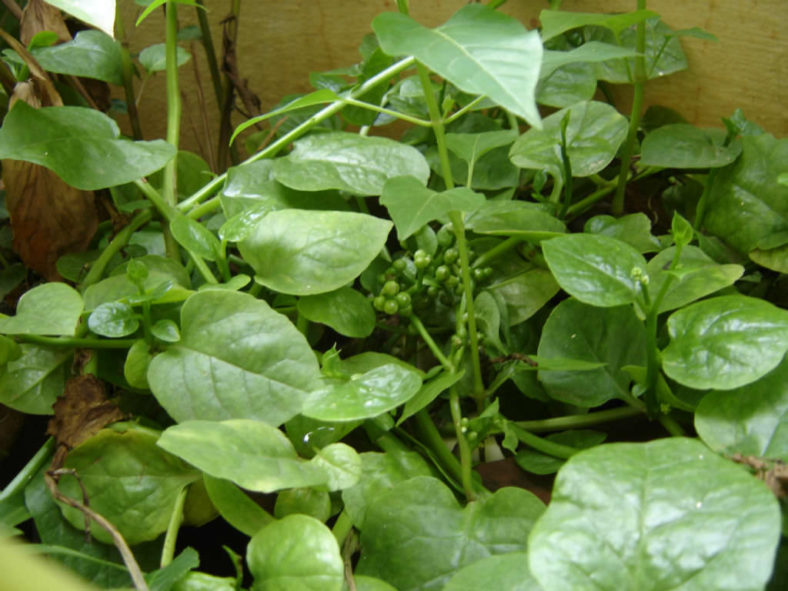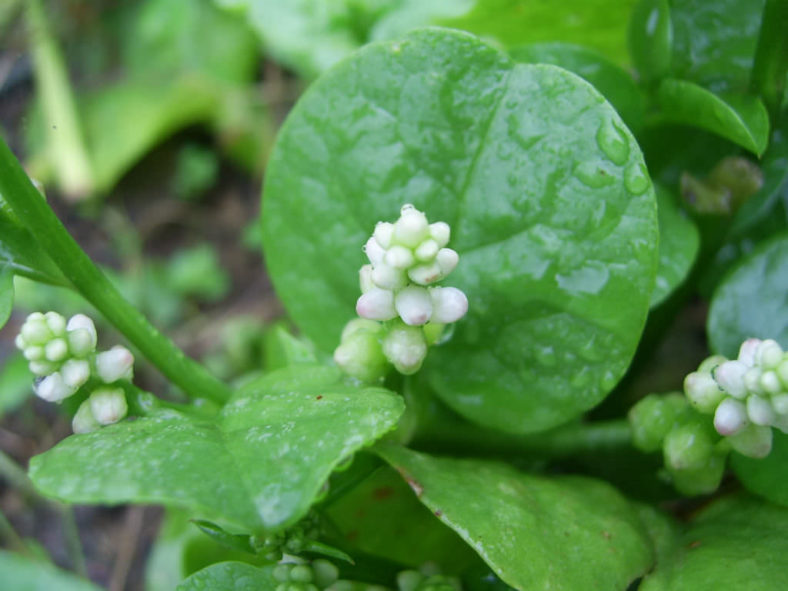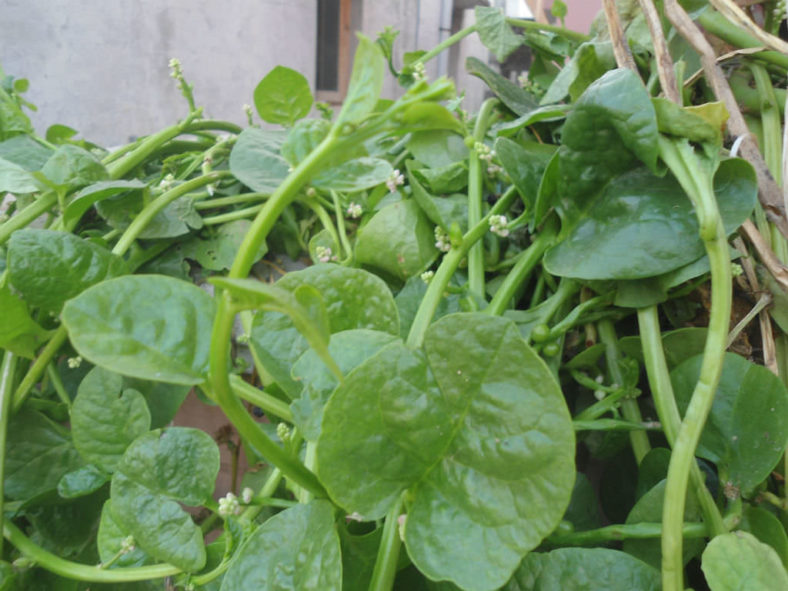Scientific Name
Basella alba L.
Common Name(s)
Buffalo Spinach, Ceylon Spinach, Climbing Spinach, Creeping Spinach, Malabar Spinach, Red Vine Spinach, Vine Spinach
Synonym(s)
Basella oleracea var. alba
Scientific Classification
Family: Basellaceae
Genus: Basella
Origin
Basella alba is native to the Indian Subcontinent, Southeast Asia, and New Guinea.
Description
Basella alba is a fast-growing perennial vine with slender, much-branched stems and semi-succulent, heart-shaped leaves. The stems are green or red and can grow up to 33 feet (10 m) long. The leaves have a mild flavor and mucilaginous texture.
The inconspicuous flowers are white or pink and appear in short spikes in the leaf axils. They are followed by ornamental, 4-parted berries that range from deep-purple to black.
Small, purple-white flowers appear at the end of the summer.
The plant is cultivated as an ornamental foliage vine or an annual leafy vegetable for its edible spinach-like leaves and stems.

Hardiness
USDA hardiness zones 10a to 11b: from 30 °F (−1.1 °C) to 50 °F (+10 °C).
How to Grow and Care
This plant grows best in full sun. Malabar Spinach prefers continuously moist soil and a pH level of 6.5 to 6.8. It can be grown in pots or a garden with a trellis or up a wall. If the soil becomes dry, it will flower, and the leaves have a much more bitter flavor.
Malabar Spinach can be grown from seed. To start from seed, plant the seeds indoors 6 to 8 weeks before the last frost. Seeds should germinate in 10 to 20 days. To speed up your seedling's growth, soak them in water overnight before planting or use a knife to open up the hard exterior seed coating.
Seedlings can be transplanted into the garden once the soil has warmed and should be placed a foot (30 cm) apart. Plants will take off in summer heat, above 80 °F (27 °C). Malabar Spinach does best with some vertical support. It can also ramble along the ground. This beautiful plant is a lovely addition to your ornamental landscape.
If you want to spread this plant quickly around your garden or share it with friends, Malabar Spinach roots easily. New plants will sprout up wherever the stems touch moist soil. In addition, it can be easily propagated from tip cuttings that root readily in water.
Once temperatures fall below 60 °F (15 °C), growth will slow down. If you do not get frost, the plant can return yearly.
Links
- Back to genus Basella
- Succupedia: Browse succulents by Scientific Name, Common Name, Genus, Family, USDA Hardiness Zone, Origin, or cacti by Genus
Photo Gallery
Click on a photo to see a larger version.


